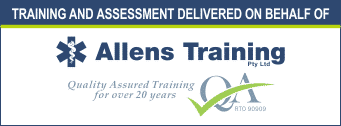Do you know why CPR is given? CPR (Cardiopulmonary Resuscitation) has roots going back as far as the 18th century, from humble beginnings as basic mouth-to-mouth resuscitation, CPR has evolved into a technique that’s saved countless lives.
Today, it’s recognized globally as one of the most effective ways to save someone in cardiac arrest. But how does it work. Why does someone actually need CPR and why is it crucial that everyone knows how to perform it? We’ll discuss that in this article. But let’s begin by understanding what actually happens when someone has a cardiac arrest.

Table of Contents
What Really Happens During Cardiac Arrest?

Imagine your heart as the power plant of a bustling city, delivering electricity (oxygenated blood) to every single building (your organs) to keep things running smoothly. Now, picture what happens when that power plant suddenly shuts down – the entire city goes dark.
That’s what cardiac arrest is like: an abrupt stop of blood flow that leaves your body’s vital systems without oxygen.
When someone experiences cardiac arrest, their heart’s electrical system malfunctions, causing it to stop beating correctly.
This means blood stops flowing to the brain and other essential organs, and in just a few minutes, severe damage or death can occur. Unlike a heart attack (a blockage issue), cardiac arrest is an electrical problem – the current simply stops.
Without CPR, there’s no way to get that power back on.
The Big Reasons Why CPR is Given

1. Keeping the Blood Flowing When It Matters Most
In cardiac arrest, blood flow stops, which means organs don’t get the oxygen they need. By performing chest compressions, you’re manually pumping the heart, pushing blood through the body and keeping vital organs functioning. It’s a way to “keep the power on” while you wait for help to arrive.
It’s a simple action with an extraordinary impact. When you perform CPR, you act as a temporary heart pump, ensuring that the brain and other organs receive the oxygen they need to stay alive.
2. CPR Is Critical in Many Different Emergencies
You might think cardiac arrest only happens because of a heart problem, but that’s just one possibility. Here are some of the main causes of cardiac arrest:
- Drowning: When the body’s deprived of oxygen, the heart can stop.
- Electric Shock: A sudden jolt can disrupt the heart’s rhythm.
- Drug Overdose: Certain drugs can interfere with heart function, leading to cardiac arrest.
- Severe Trauma: Significant injuries, such as those from car accidents, can lead to cardiac arrest.
- Genetic Conditions: Some individuals have genetic heart conditions that can trigger cardiac arrest without warning.
This means cardiac arrest can strike at any time, affecting anyone, which makes CPR training a skill everyone should have.
3. CPR Buys Precious Time Until Emergency Services Arrive
CPR isn’t about fixing the problem – it’s about keeping the person alive until someone with the right tools and training can take over. Every minute without CPR reduces the chance of survival by 10%. By stepping in, you’re giving them a fighting chance.
4. CPR and Defibrillators Are a Dynamic Duo
You’ve probably noticed those bright, boxy defibrillators (AEDs) in shopping centers, airports, and schools. They’re more than just decorations; they’re life-saving devices. While CPR keeps the blood circulating, an AED (Automated External Defibrillator) can deliver a controlled shock to the heart, helping it reset to a normal rhythm.
Think of it as hitting the ‘refresh’ button on your computer when it freezes. CPR keeps the blood moving while the defibrillator works to restart the heart’s natural rhythm. These two combined can make all the difference in a life-or-death situation.
Quick Tip: AEDs are designed to be user-friendly, with voice instructions to guide you. So don’t be afraid to use one – they’re there to help you help others.
How CPR and Defibrillation Work Together
How CPR Helps
CPR is all about maintaining blood flow. By pressing on the chest in a rhythmic way, you’re pushing blood through the heart and into the organs, especially the brain. This circulation is critical for keeping the brain alive, even when the heart isn’t pumping on its own.
At the same time, you might give rescue breaths, which provide the oxygen that blood needs to carry to vital organs. It’s a way to keep the engine running, even if it’s sputtering.
The Vital Role of Defibrillation
Defibrillation, on the other hand, is like rebooting a stalled car. When the heart’s electrical system has gone haywire, delivering a controlled shock can sometimes help reset it, allowing the heart to start beating regularly again. That’s why defibrillators (AEDs) are placed in so many public spaces – they’re designed for everyday heroes like you to use in emergencies.

Why CPR is Not Just for Medical Professionals
The reality is that most cardiac arrests happen outside of hospitals – in homes, at work, or in public spaces. This means that the person who might need to respond first is you. And you don’t need to be a medical professional to perform CPR effectively. In fact, the more people trained in CPR, the better the chances are for survival in our communities.
By learning CPR, you become a vital link in the chain of survival. You’re essentially the bridge that keeps someone alive until emergency services arrive.

What Emergency Services Do When They Arrive
When paramedics arrive, they take over from where you left off. They’ll continue CPR, use advanced defibrillation, and administer medications to help stabilize the heart. But without those first few minutes of CPR, their job becomes much harder, and the chances of survival drop significantly. You truly are the person who gives that individual the best chance of making it through.

Get Ready Today
CPR is given because it’s a powerful way to keep someone alive during one of the most critical moments of their life. Whether it’s caused by drowning, trauma, or an unexpected heart rhythm problem, cardiac arrest can happen to anyone.
Learning CPR is one of the most empowering skills you can acquire. It’s not just about knowing what to do in an emergency; it’s about having the confidence to step in and make a difference. And remember, you’re far more likely to perform CPR on someone you know than a complete stranger.
Don’t wait until it’s too late – take the time to learn CPR now. It’s quick, affordable, and could one day be the most important skill you ever learn. You never know when you might be called upon to be a lifesaver. Don’t just hope someone else will be there – be the person who is ready.







